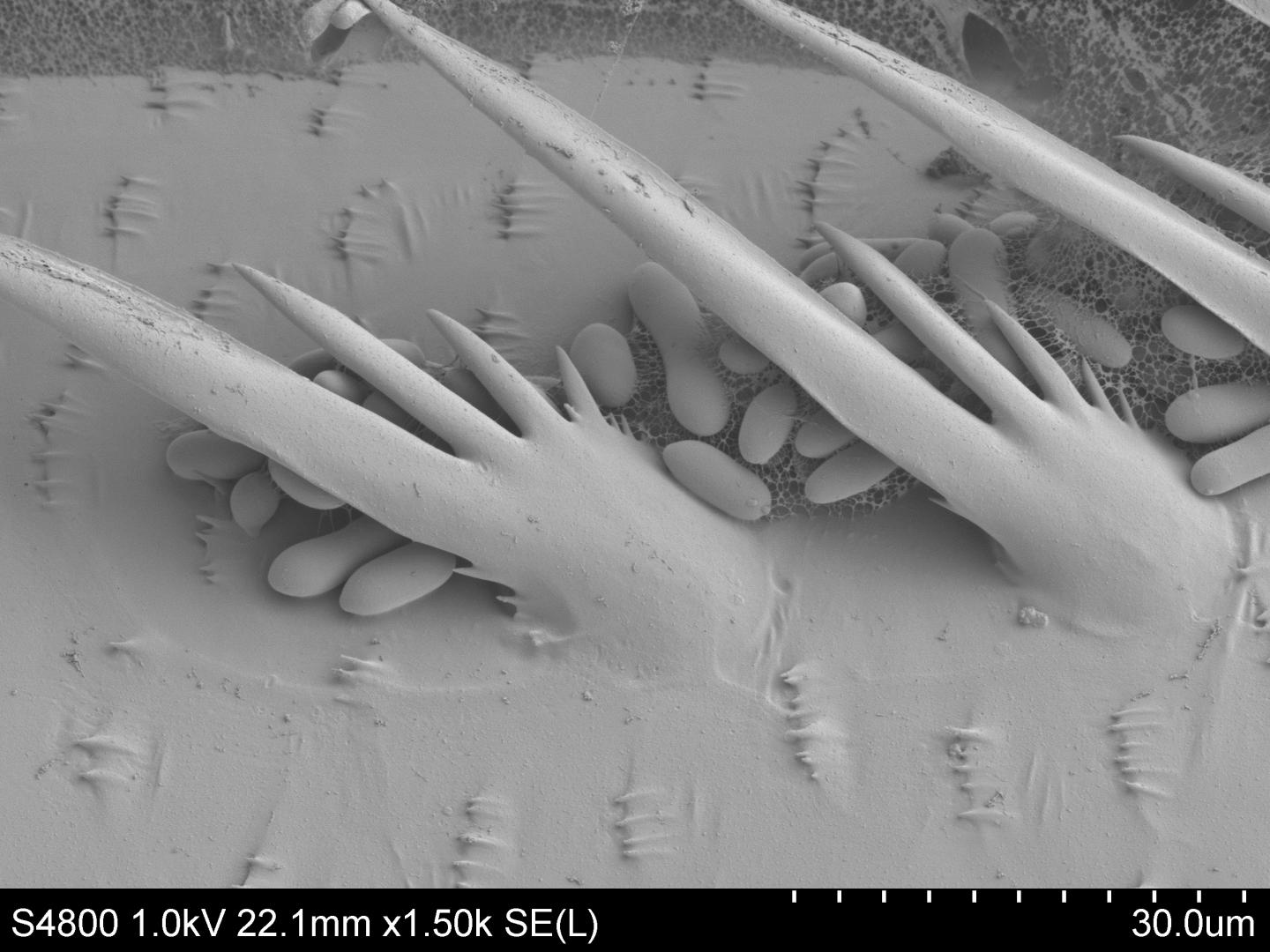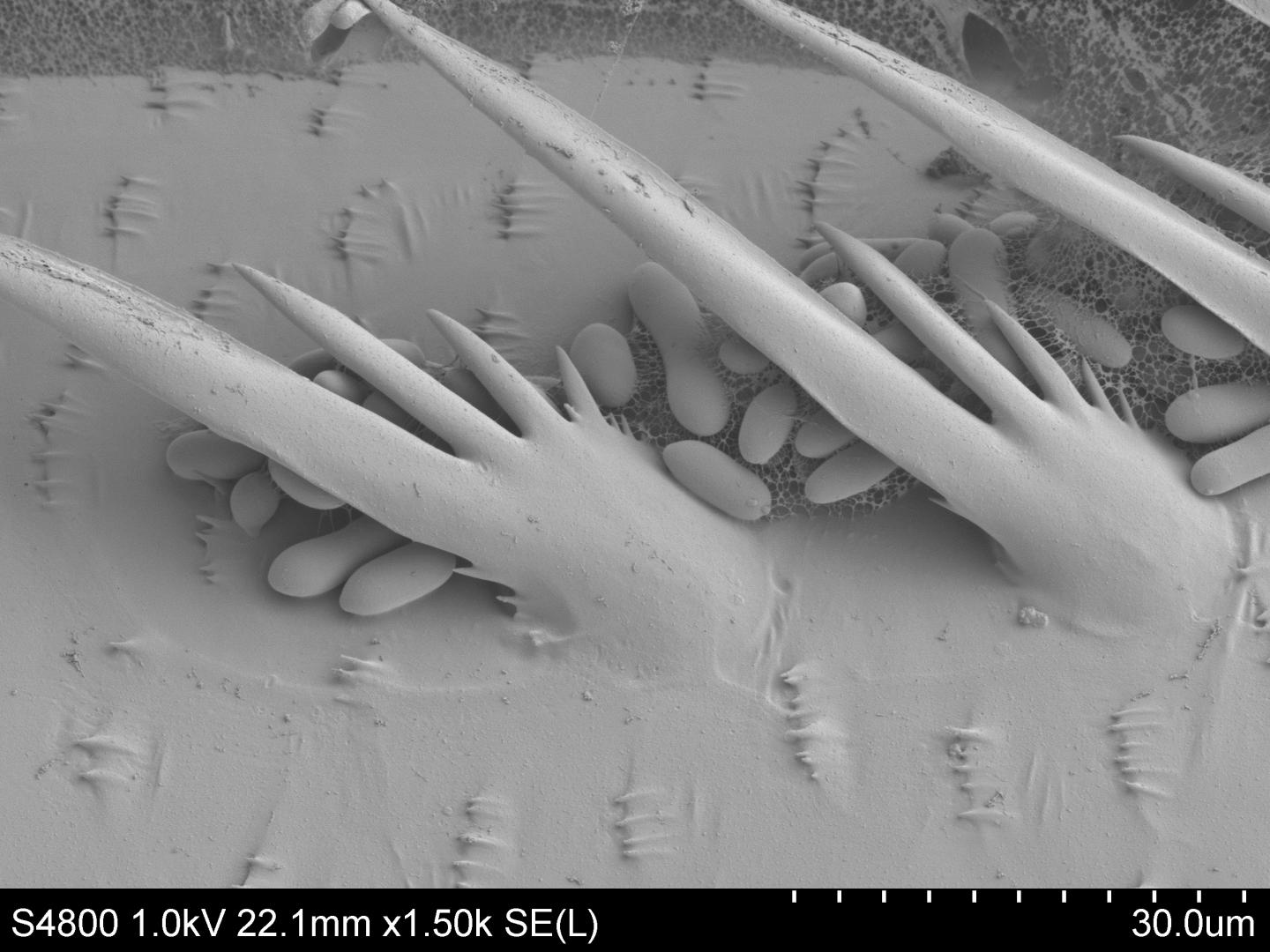
Credit: Tariq Butt
Insect pathogenic fungi can grow in liquid suspensions and on solid substrates, and their spores can attack and kill mosquitoes in aquatic or terrestrial environments. A study published on July 7th in PLOS Pathogens demonstrates that the fungal attack of aquatic Aedes larvae is a particular rapid and effective way of mosquito control.
Aedes mosquitoes transmit viruses–including dengue, zika, and chikungunya–against which no vaccines or treatments are currently available. Control of the insect vectors is the only way to reduce transmission, and largely depends on application of chemical pesticides. Concerns exist about the health and environmental impacts of these pesticides, and the development and spread of resistance among mosquito populations. Biological vector control that enlists insect pathogens is therefore an attractive alternative.
Tariq Butt, from Swansea University, UK, and colleagues, work on using pathogenic fungi to kill mosquitoes. Such fungi can kill insects in different environments. They produce aerial spores called conidia on solid substrates and blastospores in liquid media. Blastospores are considered more virulent (i.e., more harmful to the host), but the reasons for this are not well understood.
In this study, the researchers took a closer look at how blastospores of the insect pathogenic fungus Metarhizium brunneum attack and kill mosquito larvae in their natural habitat, i.e., in fresh water. They found that M. brunneum blastospores kill Aedes larvae much faster than conidia of the same fungus.
The efficient killing was associated with specific characteristics of the blastopore-host interaction that likely contribute to the virulence. Blastospores, the researchers found, easily stick to the cuticle. This is facilitated by the blastospores' secretion of a thick mucus, which is not soluble in water, and hard to break up or remove both mechanically and with detergents.
Once attached, blastopores appear to easily penetrate the larval cuticle (without the formation of specialized drill-type structures called appressoria used by some fungi to assist in the penetration of the host cuticle). Water-borne blastospores are also ingested by the larvae, rapidly penetrate the larval gut, and from there invade the larval equivalent of the bloodstream.
Conidia can attack Aedes larvae as well, but they do not stick to the cuticle and rely on protease-induced stress (proteases are enzymes that break down proteins) to kill the larvae. In contrast, blastospore invasion can take place even in the presence of drugs that inhibit the proteases.
Within hours after the blastospores attach themselves to the larval cuticle, the researchers were able to detect complex immune and stress responses in the larvae. However, these defenses are inadequate to protect against the invaders, and the larvae die within 12-24 hours after first contact.
The researchers summarize that "multiple entry points and gross damage to the cuticle and gut [by blastopores] results in rapid larval death". "Conidia, on the other hand", they say "neither adhere to the cuticle nor germinate in the gut but cause […] stress induced mortality, which takes a slightly longer time". Because blastospores are also inexpensive and quick to produce in liquid media, they conclude that "blastopores […] have greater potential for the control of Ae. aegypti larvae".
###
In your coverage please use this URL to provide access to the freely available article in PLOS Pathogens: http://dx.plos.org/10.1371/journal.ppat.1005715
Please contact [email protected] if you would like more information.
Funding: Funding for this research was obtained from ERASMUS for SIY, Coordenação de Aperfeiçoamento de Pessoal de Nível Superior for RIS ATC TCM, Conselho Nacional de Desenvolvimento Científico e Tecnológico for RIS, Fundação de Amparo à Pesquisa do Estado do Rio de Janeiro for RIS, European Regional Development Fund, Ireland-Wales Programme (INTERREG 4A) for TMB, Saudi Arabian Cultural Bureau, London for AMA, and Tabuk University, Kingdom of Saudi Arabia for AMA. The funders had no role in study design, data collection and analysis, decision to publish, or preparation of the manuscript.
Competing Interests: The authors have declared that no competing interests exist.
Citation: Alkhaibari AM, Carolino AT, Yavasoglu SI, Maffeis T, Mattoso TC, Bull JC, et al. (2016) Metarhizium brunneum Blastospore Pathogenesis in Aedes aegypti Larvae: Attack on Several Fronts Accelerates Mortality. PLoS Pathog 12(7): e1005715. doi:10.1371/journal.ppat.1005715
Media Contact
Tariq Butt
[email protected]





